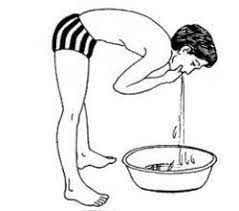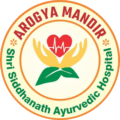Vamana

Introduction
Ayurveda, the “science of life,” is a holistic healing system with roots deep in ancient India. In the vast array of Ayurvedic treatments, Vamana stands out as a therapeutic procedure that plays a pivotal role in restoring balance and well-being. In this article, we delve into the intricacies of Vamana, shedding light on its historical significance, procedural aspects, and the manifold benefits it offers.
Historical Background
A. Origin and Evolution of Ayurveda
Ayurveda, often considered the world’s oldest healthcare system, has a rich history dating back thousands of years. Its roots can be traced to the Vedas, the ancient Indian scriptures, where the principles of Ayurveda were first elucidated. Over centuries, Ayurveda evolved, absorbing influences from various cultures and civilizations.
B. Inclusion of Vamana in Ancient Ayurvedic Texts
Vamana finds mention in classical Ayurvedic texts like the Charaka Samhita and Sushruta Samhita, indicating its significance in traditional healing practices. These texts provide detailed insights into the philosophy behind Vamana and its role in maintaining health and preventing diseases.
Understanding Vamana Ayurvedic Treatment
A. Definition and Purpose of Vamana
Vamana, often referred to as therapeutic emesis, is a detoxification process aimed at eliminating excess Kapha dosha from the body. Kapha, one of the three doshas in Ayurveda, is associated with qualities such as heaviness and coldness. By inducing controlled vomiting, Vamana helps in balancing Kapha, thus restoring harmony to the bodily systems.
B. Key Principles and Philosophy behind the Treatment
Rooted in Ayurvedic philosophy, Vamana aims to eliminate toxins, prevent diseases, and rejuvenate the body by considering the unique constitution of each individual. The therapy not only targets physical imbalances but also addresses subtle energies, emphasizing a holistic approach to health. Following Vamana, a tailored post-treatment regimen ensures sustained well-being, aligning with Ayurveda’s overarching goal of promoting long-term vitality and preventing future imbalances.
Eligibility and Preparations
A. Assessing Suitability for Vamana
Before embarking on Vamana, a comprehensive assessment is essential to evaluate the suitability of individuals for this Ayurvedic therapeutic procedure. Various factors play a crucial role in this assessment, including the patient’s age, constitutional makeup, and the specific characteristics of the ailment they are dealing with. This careful evaluation is crucial to ascertain whether Vamana is an appropriate and beneficial intervention for the individual. The age factor helps determine the resilience and adaptability of the patient’s body to the cleansing process, while understanding the patient’s constitution guides the customization of the treatment to suit their unique bodily tendencies. Additionally, considering the nature of the ailment ensures that Vamana is not only suitable but also effective in addressing the specific health concerns of the individual. This meticulous assessment reflects the personalized and holistic approach that Ayurveda emphasizes, ensuring that the treatment aligns harmoniously with the individual’s overall well-being.
B. Pre-treatment Procedures and Guidelines
Preparation is a crucial aspect of Vamana therapy. It involves a series of preparatory measures, including dietary adjustments and lifestyle modifications. These preparations aim to optimize the body’s receptivity to the therapeutic process. Here is overview of preparation
1. Dietary Adjustments:
- Individuals undergoing Vamana therapy need to adhere to specific dietary guidelines before the treatment.
- The diet may involve lighter and easily digestible foods to prepare the digestive system for the upcoming cleansing process.
- Certain foods or substances that may hinder the effectiveness of Vamana, such as heavy or oily items, might be restricted.
- Some people are advised to avoid ghee before starting Panchkarma.
2. Lifestyle Modifications:
- Adopting a disciplined lifestyle is integral to the pre-treatment phase.
- Adequate sleep and rest are emphasized to promote overall well-being and support the body’s readiness for the therapeutic procedure.
- Avoidance of strenuous physical activities or excessive mental stress helps maintain a balanced and calm state.
- Avoid excessive standing, walking and travelling.
- Avoid A.C. Use warm cloths during day and night.
3. Hydration:
- Maintaining proper hydration is essential during the pre-treatment period.
- Sufficient warm water intake assists in flushing out toxins and ensures the body remains well-hydrated, facilitating the detoxification process.
- It is also mentioned in Ayurveda to use warm water bath, warm water gargle, warm water face wash before Panchkarma. It means it is advised to avoid cold water contact.
4. Consultation and Assessment:
- Prior to Vamana, individuals undergo a detailed consultation with an Ayurvedic practitioner.
- The assessment considers various factors such as medical history, current health status, and individual constitution to tailor the treatment plan accordingly.
Procedure
A. Purva Karma: (Therapies before Vamana)
1. Snehapana (Internal Oleation):
- This involves the internal administration of medicated ghee (clarified butter) to lubricate the body internally.
- The patient is given increasing amounts of ghee over a specified period, usually 3 to 7 days.
- The purpose is to soften and liquefy the toxins (Ama) accumulated in the body, making them more amenable to elimination.
- Ghee is usually given in morning and advised to avoid food until he or she feels hungry.
2. Abhyanga and Svedana (Massage and Sudation):
- External oleation is performed through oil massage (Abhyanga) to the entire body.
- Swedana or inducing sweating is then carried out through a steam bath or warm water immersion.
- Svedana further helps in mobilizing toxins towards the gastrointestinal tract.
This Purva Karma needs around 3 to 7 days to complete. When the body signals that internal oleation is completed then we can move to next step.
3. Sneha Viram
- After completing Snehapana, a rest period is observed to allow the body to prepare for Vamana. One day is allocated for Sneha Viram, during which individuals are provided with light breakfast and lunch.
- In the evening, a preparatory diet known as Kapha Utkleshak Ahar is recommended, including items like curd and milk. “Utkleshak Ahar” refers to the diet associated with the preparatory phase before Vamana therapy.
B. Vamana Therapy
1. Evacuation of Stool and Urine:
- Before Vamana, it is essential to ensure the proper elimination of stool and urine. If elimination is not successful, Vamana cannot be conducted. Therefore, on the evening of the previous day, around 7 PM, the patient is advised to consume Utkleshana Ahara (specific diet), followed by a early sleep. Upon waking up early, the patient is instructed to evacuate stool and urine.
- For those experiencing constipation, 2 grams of Gandharva Haritaki can be given before sleep (for stool evacuation).
2. Pre-Vamana Examination:
- For patients with hypertension (HTN), medicine should be taken at 6:30 – 7.30 AM. Avoid thyroid and diabetes medications before Vamana. patient’s weight and symptoms related to dosha imbalance are noted. Pulse and blood pressure in the morning, before and after Vamana, and in the evening also should be noted.
3. Full Body Massage and Steam:
- Patient is advised to take full body massage followed by steam bath.
4. Vamana Induction:
- Then the patient is given a specific combination of herbs to induce therapeutic vomiting.
5. Vamana Process:
- The patient is closely monitored during the vomiting process to ensure a controlled and effective elimination.
- The expelled content includes excess mucus, toxins, and Kapha, thereby balancing the doshas.
C. Paschat Karm (After Vamana Procedure)
1. Gandusha (Oral Rinse):
- Gandusha, or oil pulling, is recommended.
- Swishing a small amount of warm sesame oil or coconut oil in the mouth for a few minutes helps maintain oral hygiene and promotes overall detoxification.
2. Dhumapana (Therapeutic Smoking):
- Inhaling medicated smoke is part of the post-Vamana care.
- Specific herbs may be burned, and the patient inhales the smoke, contributing to respiratory health and balancing doshas.
3. Medications:
- Ayurvedic medications may be prescribed to restore balance in the doshas and support the body’s healing process.
4. Rest and Relaxation:
- Adequate rest is crucial post-Vamana to allow the body to recuperate.
- Avoidance of strenuous activities and exposure to extreme weather conditions is advised.
5. Hydration:
D. Diet – Samsarjana Krama after Vamana
- Start with consuming freshly prepared rice gruel (Yavagu) with a pinch of rock salt.
- Introduce thin rice water (Peeyusha) during the day.
- Continue with rice gruel (Yavagu) and thin rice water (Peeyusha).
- Include more quantity compared to the first day.
- Gradually shift to consuming freshly cooked rice with a mild lentil soup (Manda).
- Continue avoiding heavy, oily, or spicy foods.
- Increase the quantity of rice and lentil soup in the diet.
- Begin introducing simple, easily digestible vegetables in the form of soups or stews.
- Include a variety of grains and cereals in the diet, along with well-cooked vegetables.
- Gradually reintroduce the regular diet while maintaining a focus on easy-to-digest foods.
- Resume a normal, balanced diet based on individual preferences and constitution.
- Maintain moderation in food consumption and continue to avoid heavy or difficult-to-digest foods.
Conditions Treated with Vamana
Vamana, a therapeutic procedure in Ayurveda involving controlled vomiting, is employed to address various conditions. The primary conditions treated with Vamana include:
- Kapha Disorders: Vamana is particularly effective in balancing and eliminating excess Kapha dosha from the body. Conditions associated with increased Kapha, such as respiratory disorders, congestion, and allergies, can benefit from this therapy.
- Respiratory Disorders: Chronic respiratory conditions like asthma, bronchitis, and sinusitis, where there is an accumulation of mucus and congestion, are often treated with Vamana to clear the respiratory passages.
- Skin Disorders: Certain skin ailments characterized by excess toxins and impurities, including psoriasis and eczema, may be addressed through Vamana therapy to purify the blood and enhance skin health.
- Metabolic Disorders: Vamana helps regulate metabolism by eliminating toxins, making it beneficial for conditions like obesity and diabetes, where metabolic imbalances play a role.
- Digestive Disorders: Conditions such as indigestion, hyperacidity, and digestive disturbances caused by an accumulation of toxins can be alleviated through Vamana therapy.
- Joint Disorders: Vamana is employed in treating joint disorders associated with an excess of Kapha, contributing to conditions like arthritis and stiffness.
- Mental Health Conditions: Some mental health disorders with a predominant Kapha component, such as depression and lethargy, may find relief through Vamana therapy.
FAQs
- Vamana is not a one-size-fits-all therapy. It requires careful assessment by Ayurvedic practitioners to determine suitability based on individual health conditions.
- Vamana, when administered appropriately, aims for long-term benefits. Regular follow-up consultations help monitor and optimize these effects.
- No, Vamana should only be performed under the supervision of trained Ayurvedic practitioners in a controlled environment.
- The procedure is generally well-tolerated, but individual experiences may vary. Practitioners take measures to ensure comfort and minimize discomfort.
- Vamana is believed to purify not just the body but also the mind, fostering mental clarity and contributing to spiritual well-being.
Uniqueness of our therapies
At Arogya Mandir – Shri Siddhanath Ayurvedic Hospital, Miraj, we delve deeply into the ayurvedic examination of each patient. Utilizing noninvasive Ayurvedic diagnostic tools such as Ashtavidha Parikshan and Nadi Parikshan, we precisely determine the pathogenesis of the disease and then prescribe therapies tailored to the specific condition. This approach leads to expedited results.
Our therapies boast the following distinctive features:
– Tranquil and hygienic therapy rooms staffed with trained therapists in a positive environment.
– Selection of appropriate massage oil based on the patient’s Prakruti and the condition of the disease.
– Complimentary Prakruti and Dhatu Sarata examinations before the commencement of therapies.
– Authenticated procedures for each therapy.
– Judicious use of herbal medicines and instruments during the therapy sessions.
– Specialized rooms equipped with all facilities for inpatient care.
Feel free to share this article at no cost.
Copyright message – Dr. Prashant Chivate has published this article on drchivateayurved.org for informational purposes about diseases. Any other use of this article is strictly prohibited. All rights reserved.
